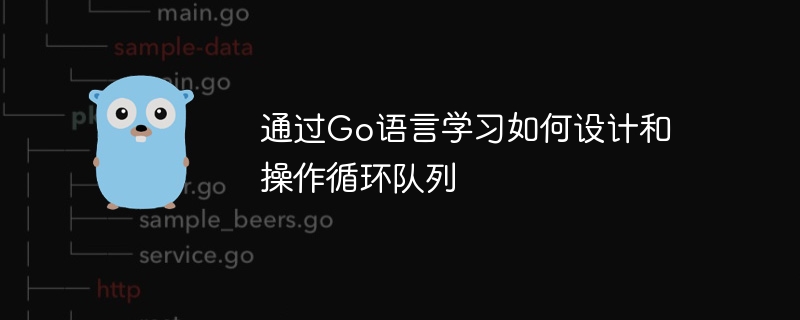
设计和操作循环队列是数据结构中常见的问题,而通过使用Go语言编写代码来学习这一概念将有助于理解循环队列的工作原理和实现方法。在本文中,我们将深入探讨循环队列的概念和Go语言编写循环队列的具体示例。首先,我们来了解一下循环队列的定义和操作。
循环队列是一种环形的队列数据结构,其基本特点是队列的头和尾在逻辑上是相连的。当队列尾部到达数组的末尾时,如果队列头部仍有空间,就可以利用这部分空间,形成循环。
循环队列常见的操作包括:
下面是使用Go语言实现循环队列的代码示例:
package main
import "fmt"
type MyCircularQueue struct {
data []int
size int
front int
rear int
}
func Constructor(k int) MyCircularQueue {
return MyCircularQueue{
data: make([]int, k),
size: k,
front: 0,
rear: 0,
}
}
func (this *MyCircularQueue) EnQueue(value int) bool {
if this.IsFull() {
return false
}
this.data[this.rear] = value
this.rear = (this.rear + 1) % this.size
return true
}
func (this *MyCircularQueue) DeQueue() bool {
if this.IsEmpty() {
return false
}
this.front = (this.front + 1) % this.size
return true
}
func (this *MyCircularQueue) Front() int {
if this.IsEmpty() {
return -1
}
return this.data[this.front]
}
func (this *MyCircularQueue) Rear() int {
if this.IsEmpty() {
return -1
}
return this.data[(this.rear - 1 + this.size) % this.size]
}
func (this *MyCircularQueue) IsEmpty() bool {
return this.front == this.rear
}
func (this *MyCircularQueue) IsFull() bool {
return (this.rear + 1) % this.size == this.front
}
func main() {
obj := Constructor(3)
fmt.Println(obj.EnQueue(1)) // true
fmt.Println(obj.EnQueue(2)) // true
fmt.Println(obj.EnQueue(3)) // true
fmt.Println(obj.EnQueue(4)) // false
fmt.Println(obj.Rear()) // 3
fmt.Println(obj.IsFull()) // true
fmt.Println(obj.DeQueue()) // true
fmt.Println(obj.EnQueue(4)) // true
fmt.Println(obj.Rear()) // 4
}在这段代码中,我们定义了一个MyCircularQueue结构体,其中包含了循环队列的数据和操作方法。通过构造函数Constructor初始化循环队列,然后实现了入队、出队、判断队列是否为空和队列是否已满等方法。
通过这个示例,我们可以清晰地了解了使用Go语言如何设计和操作循环队列,深入理解循环队列的实现原理。希望这篇文章能对大家在学习循环队列和Go语言编程中有所帮助。
以上是通过Go语言学习如何设计和操作循环队列的详细内容。更多信息请关注PHP中文网其他相关文章!




